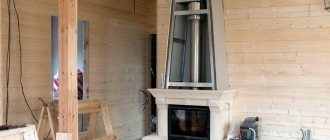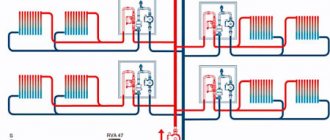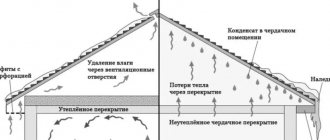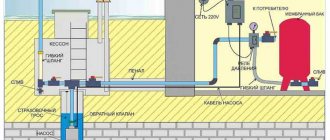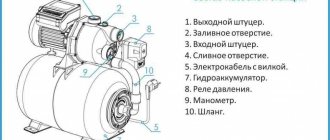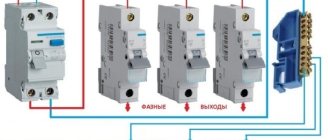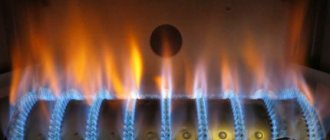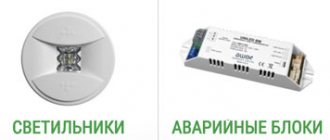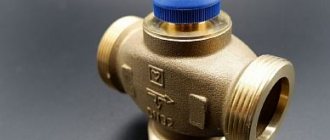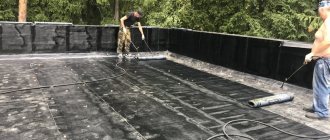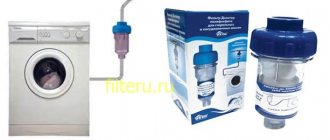A fan is one of the unnoticeable but extremely important devices that help create favorable conditions for work, relaxation and simply having a good time.
Without it, computers, refrigerators, air conditioners and other equipment will not be able to function. To ensure the most efficient operation of various devices, use a fan speed controller.
From our material you will learn about what types of regulators there are and the features of their operation. We will also tell you how to assemble the device yourself and what you will need for this.
Symbols for fan speed controllers
Explanation of parameter values in the labeling of the main leading manufacturers of fan speed controllers:
- Index “E” – 1 phase (220V) – Shuft, VENTS, Polar Bear, Systemair, Luftmeer;
- Index “D” – 3 phase (380V) – Shuft, VENTS, Polar Bear, Systemair, Luftmeer;
- Digital value – maximum current;
- Index “T” – presence of fan thermal protection connection.
Examples
- Polar Bear OVTE 7.5 regulator – single-phase, max. current - 7.5 A, with thermal protection;
- Shuft FSRD-A 3.0 regulator – three-phase, max. current – 3.0 A, without thermal protection;
- Regulator Systemair RTRD 14 – three-phase, max. current - 14.0 A, with thermal protection.
Feasibility of using the device
When the fan constantly operates at maximum speed, the resource of the device is quickly exhausted. The power of the device decreases and it fails. Most parts cannot withstand such a load, wear out, and break. Installing a speed controller increases the service life of the fan.
In addition to saving working life, the regulator also performs another important function - it reduces the noise from the operating ventilation system.
In office premises with a large concentration of office equipment, the noise level reaches, and sometimes exceeds, permissible noise levels. This is due to the fans operating at full power. It is difficult to concentrate and work normally in such conditions.
Another compelling reason for installing a regulator is energy savings . The result of reducing the number of revolutions of the blades and changing the total power of the device is a reduction in energy consumption.
Triac or stepless fan speed controller
A smooth triac fan speed controller has become less widespread.
They are used in household ventilation systems for fans with a 220 V connection. The operation of the fan is changed by adjusting the current strength. In such fan speed controllers there are no fixed button positions, i.e. the fan operation can be adjusted smoothly. The central button is usually backlit. The maximum fan current is 10 A. The connected fan must be single-phase. Connecting a triac fan speed controller does not require high qualifications. The disadvantage is extraneous noise when the fan operates in the extreme position.
Controller connection rules
To connect the fan speed controller, you can use the services of specialists or try to do it yourself. There are no fundamental features in connection - it is quite possible to cope with such a task on your own.
All bona fide manufacturers must include instructions for the use and installation of their products
Depending on the design features and type of equipment being serviced, controllers can be installed:
- on the wall as an overhead socket;
- inside the wall;
- inside the equipment housing;
- in a special cabinet that controls smart devices at home. This is usually a terminal block;
- connect to the computer.
To connect the regulator yourself, you must first carefully read the instructions provided by the manufacturer. Such a document usually comes with the device and contains useful recommendations for both connection, use and maintenance.
Wall-mounted and in-wall models must be secured to the wall with screws and dowels. Components are most often supplied by the manufacturer along with the main device. Also in the instructions for the regulator you can see a diagram of its connection. This will greatly facilitate further work on its correct installation.
Schemes for connecting regulators from different manufacturers may differ. Therefore, you should carefully study the recommendations before installation.
The speed controller is connected to the cable supplying the fan, according to the manufacturer's diagram. The main goal is to cut the phase, neutral and ground wires and connect the wires to the input and output terminal blocks, following the recommendations. In the case where the fan has its own separate switch, it will have to be replaced with a regulator, dismantling the first one as it is unnecessary.
Do not forget that the cross-section of the supply and connecting cables must correspond to the maximum voltage current of the connected device.
It is important to find the inlet and outlet openings on the connected device for connecting the power cable of the appropriate cross-section. The diagram supplied by the manufacturer will help with this.
If you are going to connect the controller to a PC, then you first need to find out what the maximum permissible temperature of the individual components of the equipment is. Otherwise, you can permanently lose your computer, whose important parts will overheat and burn out - the processor, motherboard, graphics card and others.
The model of the selected reobass also has instructions and connection recommendations from the manufacturer. It is important to adhere to the diagrams given on its pages when installing the device yourself.
If there is a need to connect more than 1 fan, then you can buy a multi-channel rheobass
There are regulators and devices built into the housing that are purchased separately. To connect them correctly, you should follow the instructions.
For example, an integrated controller has on/off buttons on the outside of the system unit. The wires coming from the regulator are connected to the cooler wires. Depending on the model, the rheobass can control the speed of 2, 4 or more fans in parallel.
For computer fans and others used at home, you can make a regulator yourself
A separate regulator for the cooler is installed in a 3.5 or 5.25-inch bay. Its wires are also connected to coolers, and additional sensors, if included, are attached to the corresponding components of the system unit, the condition of which they will monitor.
Mounting options
- Invoice – for external installation;
- Secret (built-in) – for indoor installation;
- For DIN rail mounting.
Main manufacturers – Shuft, Vents, Polar Bear, Systemair, Luftmeer
For EC fans
To regulate the operation of energy-saving fans with EC motors, EC controllers or control units for EC fans are used. To control such controller blocks, it is necessary to purchase a regulator with a 0-10V control signal.
Recommendations for reducing noise levels
Often the desire to adjust the fan speed is associated with the increased noise level that the device produces. The device should “sound” in the range of up to 55 dB. Normal level is 30-40 dB.
Silent units produce no more than 25 dB. Such designs have built-in gaskets and high-precision bearings that reduce vibrations from the electric motor. The number of blades located at a certain angle was also selected
The regulator does not actually reduce the noise: at maximum speed the fan makes the same sound as before. It runs quieter at lower speeds.
In order to reduce the noise level from the hood even at maximum speed, you need to check the tightness of the attachment of the main device body to the wall, a special niche. Gaps can be sources of additional vibration.
These gaps are sealed with foam rubber or polyurethane. It is also useful to inspect the fastening elements, which must be well tightened. A thin isolon substrate in a vibrating surface will also reduce the noise level.
And the most effective way to reduce the noise of the hood is to choose a silent duct fan.
Electronic control of automatic transformer
The electronic automatic transformer circuit is based on the principle of pulse width modulation. In this case, the pulses are modulated by a transistor circuit. During operation of this circuit, a smooth change in the output voltage occurs. The output stage of the transformer includes field-effect or bipolar transistors. They have an isolation gate and switch at a frequency of approximately 50 kHz.
Power control occurs due to changing pulse duty cycle. This parameter represents the relationship between the pulse repetition period and its duration. In this case, the frequency remains unchanged. A decrease in the power supplied to the electric motor occurs due to a decrease in the duration of the pulses and an increase in the pauses between them.
Such controller models are compact in size and low in cost. As a disadvantage, it should be noted the limited length of the cable from the device itself to the electric motor. In this regard, the control unit of the automatic transformer is placed in a separate housing and is located directly next to the fan.
Where is Innovert Vent used?
Converter for Innovert Vent fans for operation with 3-phase asynchronous motors. Its operating principle is very reliable and easy to control - connect to the mechanism and start - as a result you can control the fan speed.
Innovert Vent is a high efficiency frequency converter that is easy to operate. The settings are clear to the staff. This will not cause difficulties for connection. It goes well with the operation of the motor on conveyors, extruders, metal processing machines, factory mechanisms, ventilation and water supply. The frequency generator is not programmed during setup, this makes it easy to set up.
Commissioning of the converter is done quickly. The control panel has a potentiometer with electronic filling. The engine mechanism with a frequency converter increases the period between repairs and improves the technological system process. After setting up the frequency generator, the mechanism is operated in an economical mode, there is no risk of downtime outside of the plan. With its use, it becomes possible to make predictions about operational failures, since the mechanism will warn you or stop the motor due to a breakdown.
The price of a frequency converter is less than that of ventilation motor equipment; you will save during repairs and replacement of spare parts.
